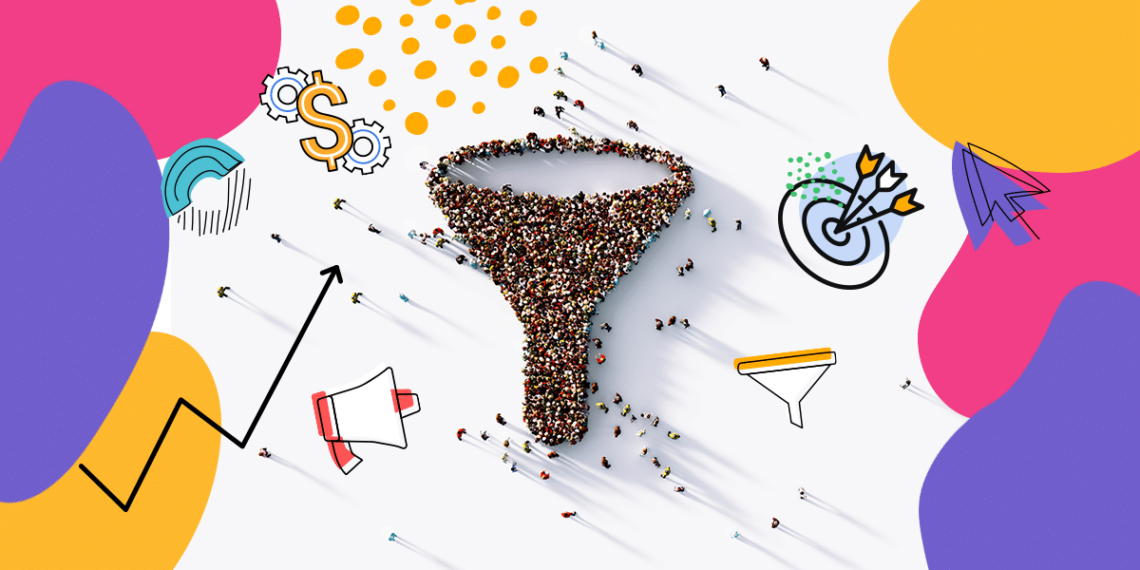Today we’re going to take a look at how to build out a sales funnel for free. This tutorial is designed to help you understand the basics of creating a sales funnel from scratch. You’ll learn about how to use proven high-converting templates, why you might want to do things differently, and how to make sure you don’t spend thousands of dollars setting up your funnel.
What Is a Sales Funnel?
A sales funnel represents the entire buying cycle that leads to a sale. This includes awareness, interest, desire, and action.
The Awareness stage is where people are first exposed to your brand or product. You want to capture attention and build trust.
In the Interest stage, buyers start exploring your product further. They might look up reviews, read about features, and even watch videos.
In the Desire stage, they’re ready to buy. They’ve researched enough to know what they want, and they’re interested in purchasing.
Finally, in the Action stage, they decide to take the next step and complete the purchase.
1. Define Your Sales Pipeline
Sales pipelines are used to track the progress of a prospect throughout the sales cycle. They help you identify where sales gaps exist and how much time it takes to close each step in the sales process.
The sales pipeline consists of three main parts:
• Lead generation
• Qualification
• Nurturing
Understand the 4 Sales Funnel Stages
The four stages of the sales funnel are Awareness, Interest, Decision, and Action. They’re a great way to understand how potential customers move through your marketing efforts.
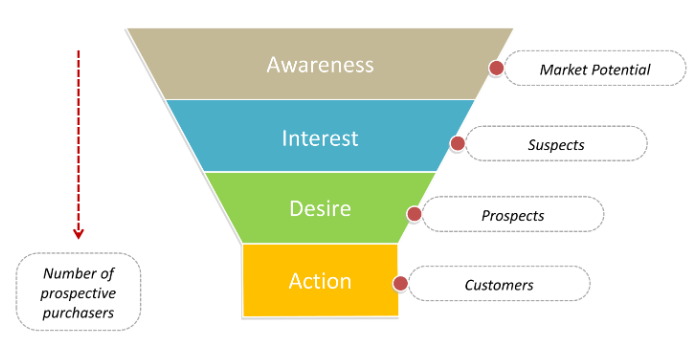
Awareness
This is where people become aware of your brand. You might do some research online and find out about your competitors, and see what products they offer. Or maybe you read something interesting about your industry and decide it’s worth investigating further.
Interest: When someone becomes interested in your product or service, they start thinking about buying it. You might talk to friends and family members about your idea, or you might come across an article or video that sparks interest.
Decision: Once someone decides to buy a product or service, they’ll likely go ahead and make a purchase. So, now you know why you’re here — to help people reach this decision.
Action: At this final stage, people actually buy your product or service. In fact, most purchases happen during this phase. You might set up a landing page or email campaign to encourage people to take action.
Interest
When consumers reach the decision stage in the sales funnel they’re making decisions, comparing products, and considering their options. It’s now the time to swoop in and provide amazing content that helps them, without selling to them.
If you’re starting out by pushing your product or service, you’ll lose potential clients and scare them away. The goal here is for you to establish your expertise, inform the consumer, and offer to help in any way you can
Decision
The decision stage of the sales process is where leads are making decisions about whether to go ahead with buying your product or service. You’re trying to convince them that you’re the one for the job. They’ve already done some research into what you do and how much you cost. Now, it’s time to close the deal.
This is when you’ll want to make your best offer because it’s the time when you really stand out from the crowd. If you don’t give your customers enough reason to choose you over someone else, they won’t follow up with you.
Action
At the very bottom, the customer takes action. He or she buys your product or service and joins your business’ ecosystem.
Just because a customer has reached the bottom of the funnel doesn’t mean your work here is done. Action is for consumers and marketers. You want to do everything you can to turn one purchase into ten, ten into a hundred, and so on.
You’re focusing on keeping existing customers happy. Thank them for their purchase, encourage them to share their thoughts with you, and be available for tech support, as needed.
Increasing Sales Funnel Conversions
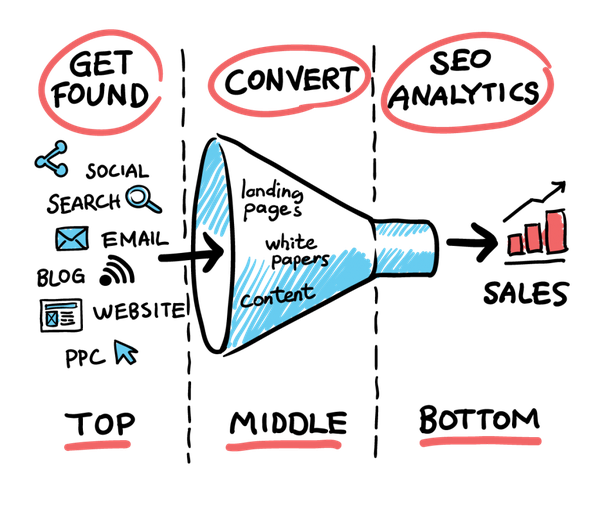
At each stage, you have multiple options for increasing conversions. For example, at the awareness stage, you can send emails promoting your freebies, newsletters, or offers. At the interest stage, you can send out promotional messages encouraging people to take action. And at the consideration stage, you can send special offers and discounts.
Once you’ve identified the right sales funnel stage, you can optimize your content to match the needs of each stage. For example, if you notice that many people are visiting your site but aren’t taking action, you can create a video explaining your product and upload it to YouTube. Then you can add a link to the video on your homepage and social media sites.
This strategy works well because it allows you to reach a broader audience, including those who haven’t visited your site before. Also, since you’re sending the same message to everyone, you won’t waste valuable resources creating unique content for every person. Instead, you can spend your time focusing on improving your existing content.
To help you identify the right sales funnel stage for your business, here are some tips:
• Look for signs of interest—such as requests for additional information, downloads, or inquiries. These signals indicate that your prospect is becoming aware of your product.
• Watch for indications of interest—such as clicking on links, signing up for your newsletter, or requesting a quote. These actions show that your prospect is beginning to consider your product.
• Check for purchases—this indicates that your prospect is seriously thinking about buying your product.
• Track your progress—you can measure the effectiveness of your efforts by tracking the number of leads generated, the percentage of leads converted, and the average lead value.
• Measure your results—if you don’t track your results, you won’t know if you’re succeeding or failing. To get started, try Google Analytics.
Now that you know how to identify the right sales funnel stages, let’s talk about optimizing your content for each stage.
Sales Funnel Stages
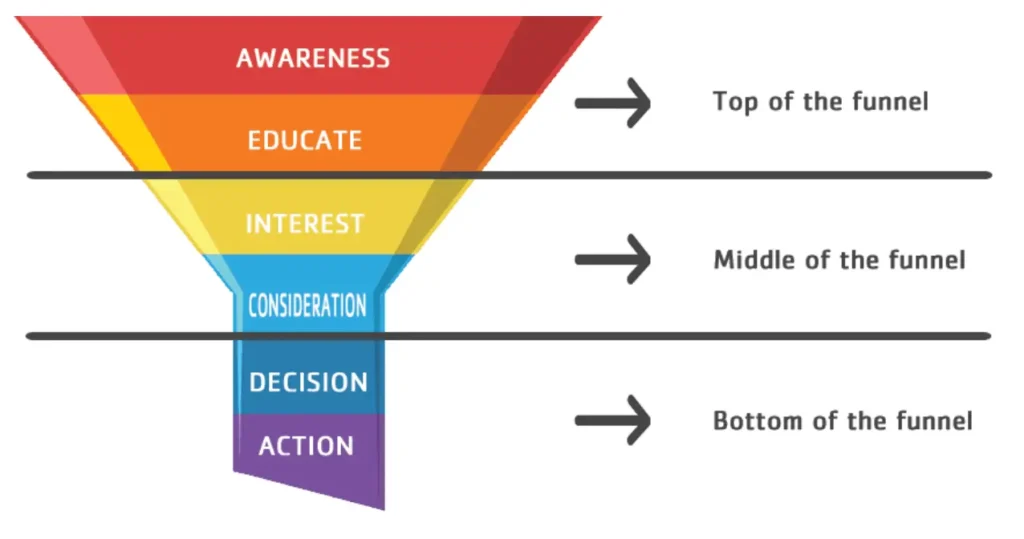
Top of the Funnel
The top of the funnel refers to the initial stages of customer acquisition. This phase starts when someone becomes aware of your product or service, and ends once they become loyal consumers. In a B2C context, this could mean when a potential buyer sees your logo and decides whether or not to purchase your product.
In a B2B context, the top of the funnel begins when a prospect learns about your brand. They might see your ad on Facebook or LinkedIn, or read a blog post about how great you are.
Once they become interested in your brand, you need to capture their attention and make sure they know you exist. You do this through advertising, marketing materials, and public relations.
Once they learn more about your brand, you’ll need to convince them to buy your product or use your service. This is where things like sales enablement and lead nurturing come into play.
As you can imagine, there are multiple strategies you can employ to reach prospects throughout the entire process. But here are some general tips to help you start thinking about optimizing for the top of the funnels.
Create a marketing strategy
Before you begin any marketing campaigns, you need to think about why you’re doing them. What problem does your product solve? How did you find out about your target audience? And most importantly, what makes your product unique?
You need to answer those questions to determine exactly what type of messaging works best for you. For example, if you sell software, you probably won’t spend much time talking about the features of your product. Instead, you’d focus on creating stories around the problems your product solves. If you’re selling shoes, you might talk about fashion trends, celebrity endorsements, or even the latest shoe model.
Middle of the Funnel
The middle of the funnel corresponds roughly to the interest and desire phases of the sales cycle. At this point, people are still interested in what you offer but haven’t yet made up their minds whether they want to buy it. They’re likely to start researching further into your product or service and might even try out some demos or samples.
This is where most companies make mistakes. Instead of focusing on getting users onto their site, many businesses spend too much time trying to convert visitors who aren’t ready to buy. As a result, they lose potential revenue because those people never end up converting.
Instead, you should be spending your time making sure that all of your traffic gets funneled into the right place. That means ensuring that every person who visits your website has an opportunity to get closer to buying your product or using your services.
For example, let’s say you sell software. Your goal is to get as many people as possible to visit your landing page. Then, you want to ensure that each one of these leads is qualified enough to move forward with a sale.
Bottom of the Funnel
The final step in the buying cycle is the action stage. This is the place where people start doing things like filling out forms, adding items to shopping carts, and clicking buy now buttons. It’s also the part of the funnel where most companies fail, according to HubSpot. Why? Because the majority of businesses don’t take into account what happens next.
You might want to spend some time thinking about how customers move through the purchasing journey and what steps you could take to make it easier for them. For example, perhaps you already offer free shipping, but you could make it even better by offering same-day delivery or extended return policies. Or maybe you could provide a way for customers to easily track their packages online.
In addition to making it easier for customers to complete purchases, you should also consider whether you’re providing enough information throughout the sales process. If customers aren’t able to find the product they want because they can’t figure out how to narrow down their choices, they’ll probably just go somewhere else.
Retention and Re-Engagement
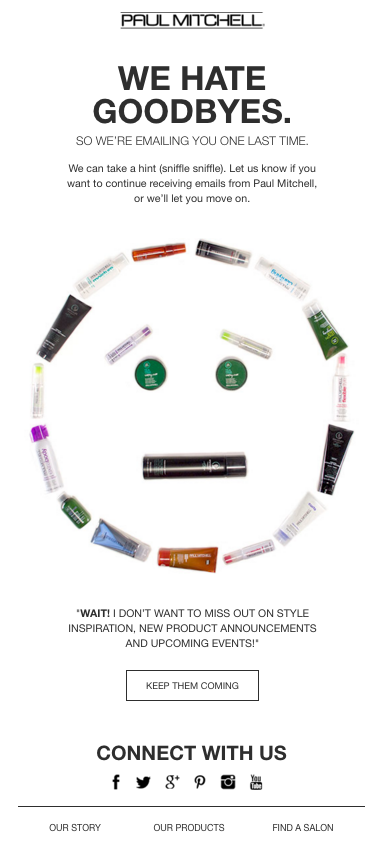
Lead nurturing doesn’t end when a lead crosses over into the sales funnel. In fact, it starts there. By nurturing leads throughout the entire buying process, you keep them engaged and make sure they don’t just disappear once they’ve bought something from you.
Here are some strategies you can employ to help nurture your leads and turn your current customers into repeat buyers.
How Lead Nurturing Works
Nurturing involves keeping your existing leads happy so they continue to use your products and services. You do this by sending emails, text messages, and other communications to your leads to remind them why they signed up in the first place.
There are two main ways you can nurture leads:
1. Email Marketing
If you have an email list, then you can send automated emails to your leads based on certain triggers. For example, if someone signs up for your newsletter, you can send them an email asking them to fill out a survey.
2. Personalized Messages
If you don’t have an email list, you can still nurture your leads by sending personalized messages to them via social media platforms such as Facebook and Twitter. These types of messages are more effective than automated ones since they give you the opportunity to connect with your audience directly.
Key Ingredients Your Sales Funnel Must Have
The secret sauce behind every successful sales funnel is the same. But what makes yours different? What ingredients do you need to add to your own version of the marketing funnel for the perfect customer journey? Here are five key ingredients that you must include in your sales funnel.
Lead Magnet Landing Page
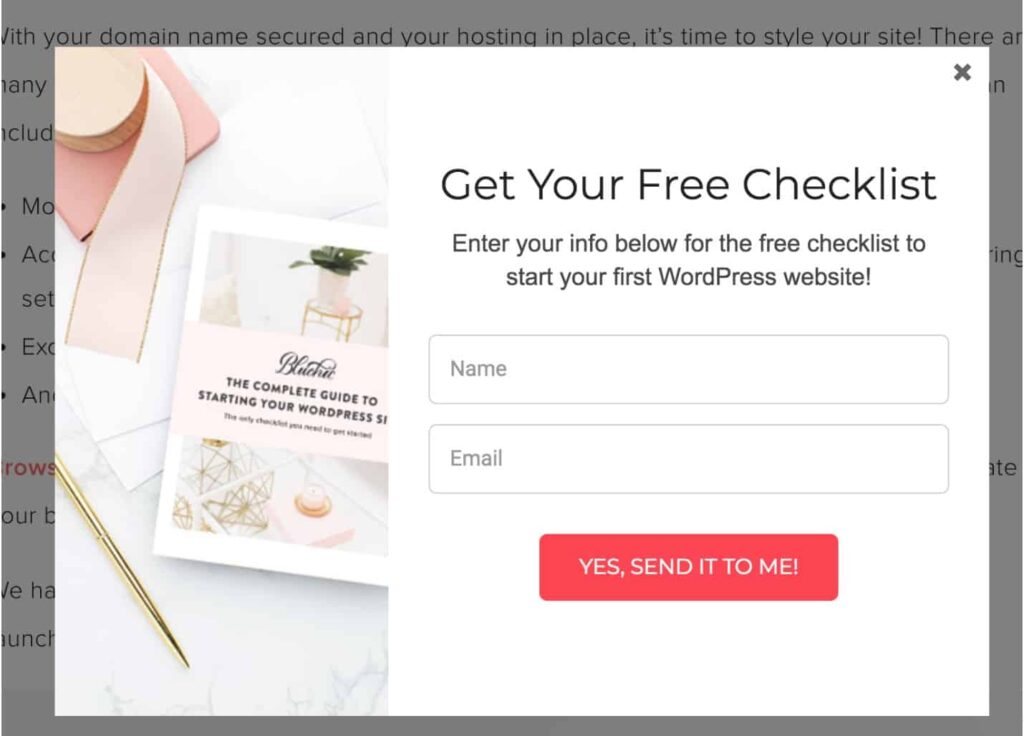
A lead magnet is designed to immediately draw people into your sales funnel. This could be a free report, ebook, checklist or video. You’re trying to make sure that once someone lands on your site, they are compelled enough to enter their contact information.
The goal of the landing page is to convert those visitors into leads. If you do a good job of capturing their interest, they’ll sign up for your newsletter and eventually become potential customers. Test different versions (with split testing) to optimize conversion rates.
What makes a great lead magnet? Here are some things to consider:
Lead Magnet
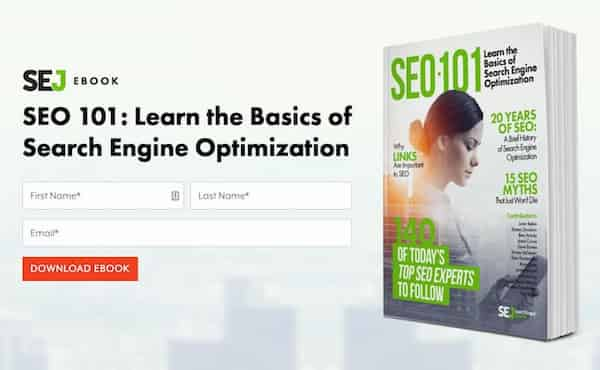
The next ingredient of your agency marketing funnel is your lead magnet — a piece of information, content, or asset that you give away for free, hoping to attract a potential customer’s email address or other contact details.
- What is it that you offer that you want clients to sign up for?
- What is that huge problem you solve for them that no one else does?
- What benefits will your clients get from signing up for your service?
Your lead magnet attracts prospective clients, just like metal to a magnetic field. In fact, many people use the analogy of a magnet to explain how lead magnets work. But what makes one lead magnet better than another? What are some things that make a good lead magnet?
In order to answer those questions, we’ll take a look at three types of lead magnets:
1. Free Content
2. Free Trials
3. Free Reports
Exit Pop-Up
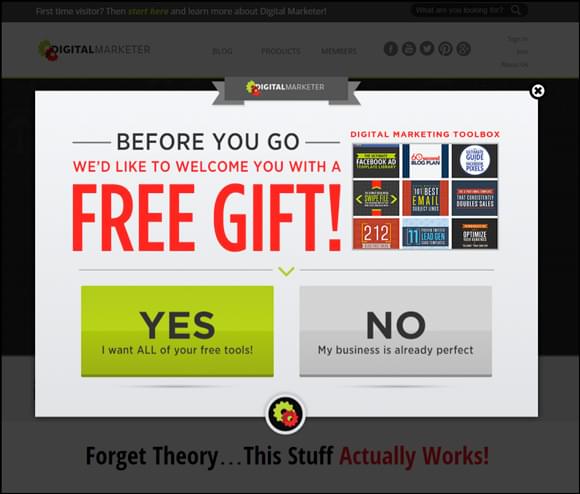
An exit popup is a great tool to help you persuade someone to take action. If you want to make sure they do, here are some tips to get the most out of them.
1. Give them a reason to act
If you want to get someone to take action, you’ll need to give them a reason to do so. You don’t just want to say “click here.” Instead, you want to tell them what they will gain by clicking. For example, if you sell something online, you could offer a discount code or coupon. Or if you run a blog, you might suggest a free download.
2. Use a clear call to action
You don’t want to use too many words. People often skim text, especially on mobile devices where there isn’t much space. So, try to limit your copy to one sentence and a button. This makes it easy for readers to understand what they should do next.
3. Be specific
Don’t assume that everyone knows what you mean. Tell your audience exactly what they need to do. For example, if your goal is to sign up for a newsletter, you might write “Sign Up Now!” rather than “Click Here.”
Thank You/Congrats Page
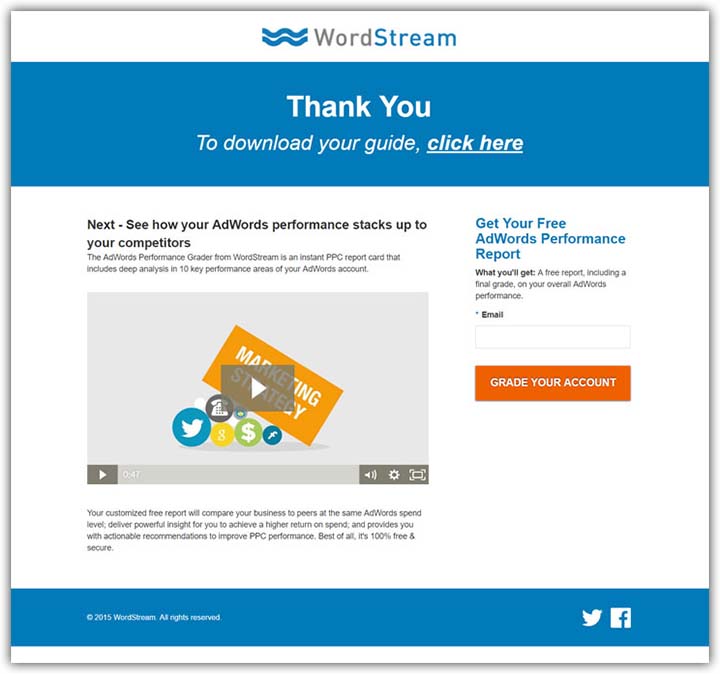
A Thank You Page For Your Lead Generation Funnel
The purpose of a Thank You Page is to let people know you appreciate what they’ve done for you. This is especially important when you are working with lead generation companies because they are essentially selling you the opportunity to work with them.
So if there’s anything that makes me feel good about being sold to, it’s knowing I am appreciated and acknowledged.
Here’s why a Thank You Page is important:
1.) It reminds prospects that you value them.
2.) It helps build trust.
3.) It lets them know you’re genuine.
4.) It gives them some closure, letting them know how far along the customer journey process is.
Free Sales Funnel Builder Software – Top 5 Free Sales Funnel Builders
I hope these tools will help you grow your list and improve your conversion rate.

1. Systeme.io
Systeme.io makes it easy to create an online business from scratch. It’s free and intuitive.
Systeme.io helps companies create and launch sales funnels, affiliate programs, email drip campaigns, online courses, blog posts, and websites.
Marketers can use the platform to automatically capture new leads using high-converting sales funnel templates, landing page templates, add rules, and trigger emails.
You can also customize each page using drag & drop elements with a great landing page editor.
Systeme.io also provides you with an online course builder.
#2. Leadpages
LeadPages is one of the most popular sales funnel builder software available. It has been downloaded over 1 million times and has helped thousands of marketers worldwide.
It offers a variety of templates to help you easily set up your sales funnel.
You can add multiple pages to your lead opt-in forms, such as thank you page, optin page, order confirmation page, checkout forms etc.
You can also customize each page using drag & drop elements.
There are plenty of prebuilt landing page templates to choose from.
You can also create custom landing pages and squeeze pages to promote specific products or services.
With LeadPages, you don’t need to hire a developer to build your website.
All you need to do is upload your HTML code and adjust the settings.
This makes LeadPages one of the easiest sales funnel building tool to use.
#3. Aweber
Being one of the longest established email automation providers, they know their stuff when it comes to landing pages. AWeber’s Landing Page Builder is a landing page creation tool. It has everything you need to get started, promote, and sell products. Each single web page template is created specifically for use to take a particular action.
#4. OptinMonster
Optin Monster is a highly customizable sales funnel builder software. With Optin Monster, you can create beautiful landing pages and sales funnels without coding knowledge.
Its intuitive interface lets you easily edit text, graphics, and video content.
You can also insert various types of call-to-action buttons and opt-in forms to encourage your visitors to subscribe to your mailing list, download your eBook, or buy your product.
You can also select from hundreds of professionally designed landing page templates.
#5. Getresponse
GetResponse is one of the few email marketing tools we’ve tested that was designed specifically for inbound marketing. It has flexible form fields, a reference page editor for creating custom pages, the integration of Google analytics, and sophisticated automation of email marketing, allowing you to both collect and retain new leads.
Their new conversion funnel feature lets you do everything in one place and easily follow where the conversions are best.
Conclusion
Creating a sales funnel for your website or blog is a great way to increase traffic and conversions. But if you’re looking for a quick and easy solution, check out Systeme’s free toolkit. It includes everything from an awesome landing page builder, opt-in forms and sales funnel templates. And since it’s free, you have nothing to lose but lots of potential gains.
How to Build a Sales Funnel Fast
The fastest way to an effective sales funnel is by copying PROVEN sales funnel templates.
